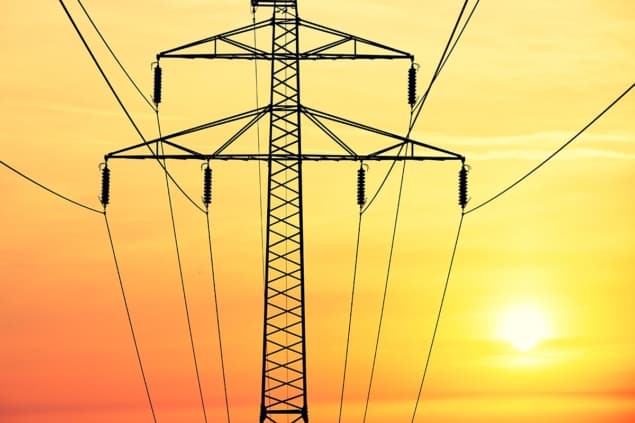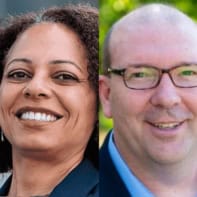
Researchers have calculated that Braess’ paradox – whereby adding transmission capacity to a network can degrade the network’s performance – can be avoided in electrical power grids by implementing the appropriate secondary frequency control. If the result can be demonstrated in real networks, it could help engineers build resilient networks that are able to integrate new sources of energy.
It seems reasonable to expect that adding new transmission lines to a power grid will improve its performance. However, in the 1960s the German mathematician Dietrich Braess showed that adding roads into some traffic networks actually increases congestion – an effect dubbed Braess’ paradox. Since then scientists and engineers have shown that the paradox can also apply to similarly interconnected nonlinear, dynamical general electricity grids. These grids are essential for modern life – and are constantly evolving, particularly with increases in renewable energy generation – so understanding the implications of Braess’ paradox is essential
Now scientists in Spain and Germany have joined forces to gain a better understanding of how to mitigate the effects of Braess’ paradox in electricity networks. Benjamin Schäfer and colleagues at the Technical University Dresden, brought with them expertise in Braess’ paradox, whereas Eder Batista Tchawou Tchuisseu and colleagues at the Institute for Cross-Disciplinary Physics and Complex Systems in Mallorca contributed their expertise in controlling electric network failure.
Controlling frequency
Electrical power grids operate in alternating current (AC) mode and all generators in the grid operate at the same frequency (50 Hz in Europe) and are synchronized across the network.
“Frequency stores information about the grid, telling you something about the balance of the grid,” explains Schäfer. “So, if frequency starts to drop this typically indicates that there is a shortage of supply,” he adds. “Think of a generator rotating at given frequency, if you draw energy out of the system it is taken from the rotating energy of this rotor, effectively slowing the generator down and causing grid frequency to drop.”
There are several mechanisms used in a grid to control frequency fluctuations caused by energy shortages. A few seconds after a frequency drop occurs, primary control kicks into action to stabilize the frequency. However, primary control is unable to restore frequencies to 50 Hz and this leaves the grid susceptible to another drop in frequency.
“In our current system, not all power plants contribute to all types of control, with only a few dedicated power plants having this very fast primary control response,” says Schäfer. He adds that the slower-responding secondary control, which integrates the stabilized low frequency to restore it back to 50 Hz, is rarely considered in dynamical modelling by either physicists or engineers.
Curing Braess’ paradox
Schäfer and colleagues, however, were keen to study secondary control because primary control fails to prevent Braess’ paradox affecting electricity grids. The team did an analytical investigation of the general stability of a secondary controller in a simple electric network model consisting of two connected nodes. Then they simulated the addition of lines to a more complex system, invoking Braess’ paradox.
“With no secondary control, adding a line causes a sudden blackout, a prototypical Braess’ paradox. But in the same network with secondary control, adding a line has no effect,” says Schäfer.
Schäfer admits that it had been a challenge to use analytical insight to explain how the secondary controller cured Braess’ paradox in all simulations, and so the team has also proposed additional intuitive explanations.
Ensuring future grid stability
The team describes its findings in the New Journal of Physics. Schäfer says that when the paper was being considered for publication a reviewer asked a very useful question: “How much control do you need?” For example, does secondary control need to be applied at every node, both supplier and consumer? The team tried simulations with varied levels of control and found that secondary control had to be implemented at all nodes for Braess’ paradox to be reliably cured in a network.

Physicists get to grips with complex systems
“We firstly warn that new line installations should be double checked to ensure they don’t cause Braess’ paradox,” says Schäfer. “Our second recommendation is that to prevent Braess’ paradox it’s important to distribute secondary control.” The importance of secondary control distribution in local area nodes as well as in generators, led the team to encourage the involvement of energy consumers in future energy grid plans, for instance, implementing demand control schemes that incentivize households to use energy at times of low demand.
Looking towards the future, Schäfer and his team are keen demonstrate the prevention of Braess’ paradox experimentally. This, they hope, will go some way to demonstrate to engineers the importance of understanding Braess’paradox as a collective phenomenon. “Convincing engineers is important and then we can focus on counter-measures, experimentally figuring out which parts of the network we need to control to guarantee stability.”



